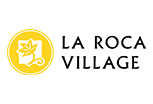During the Middle Ages, Besalú was home to a Jewish community that lived in their own neighbourhood, separate from the rest of the city. In the year 1264, King Jaume I the Conqueror allowed this prosperous community, mostly made up of doctors and shopkeepers, to build their own places of worship. In Besalú, we can visit a mikvah, the sacred space where spiritual purification rituals involving total immersion in water were performed, in accordance with Jewish law. There are other cities in Catalonia that retain a rich Sephardic heritage: in Girona, the Call district, with its narrow, labyrinthine streets, is one of the city’s greatest tourist attractions. The Girona Museum of Jewish History invites us to explore the culture and history of Jewish communities in Catalonia during the medieval period. Every year in September, the city of Girona participates in the European Days of Jewish Culture, holding various events and exhibitions to showcase the legacy of this important community. In Castelló d’Empúries they have preserved the name of the Carrer dels Jueus in the location where the call (Jewish Quarter) that was home to the first synagogue in town was located. In the city of Barcelona, you can stroll through the twelfth-century Jewish Quarter on the streets adjacent to the cathedral, Santa Eulàlia, Banys Nous and Call. The best example in the Tarragona area is found in Tortosa, which has two Jewish Quarters, Call Vell and Call Nou.

















